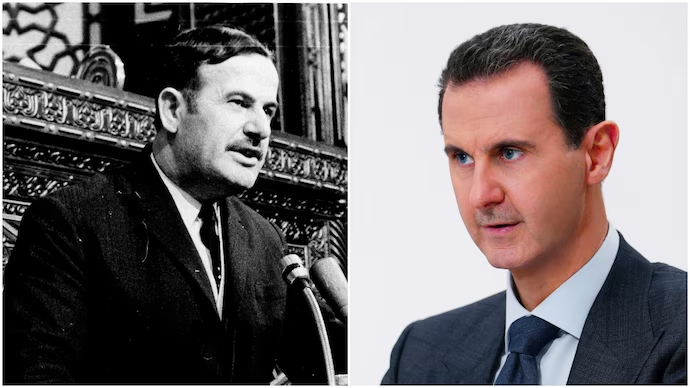In a lightning move, Syria’s rebels have overpowered the defense in Damascus and have therefore toppled the symbol of the Assad family rule in Syria, after 54 years. The stunning coup d’état which happened shortly after the wee hours of Sunday morning has been seen as a revolutionary change in Syria and a shock to the region.
Opposition fighters moved into the city shortly after 5 a.m., local time, and quickly overwhelmed most government targets. Activists among their first objectives identified the Damascus International Airport, state television headquarters, and other important facilities. For some unknown reason, however, by the early morning light, the government security forces were almost nowhere to be seen.
Syria’s President for over two decades, Bashar al-Assad, was said to have abandoned the capital, before the rebels’ advance. It is reported that he entered a plane and flew away only to be heard from an unknown destination. The last information about him is still unknown.
Early in the takeover, rebels also free thousands of political prisoners at Sednaya prison, which is the prison that has one of the worst record of treating its detainees. Other jails in Damascus also had huge releases in similar fashion where political detainees were embraced by kin members as displayed in You Tube videos.
A Smooth Takeover Amidst Chaos
While much of the government apparatus appeared to collapse overnight, Prime Minister Mohammad Ghazi al-Jalali released a video statement from his home, declaring his willingness to aid in ensuring a peaceful transition. “I will remain here to support the continuity of governance until the country stabilizes,” he said. Given that many people are concerned about the possibility of more anarchy after Assad’s departure, his statement was greeted with cautious hope.
The rebel leadership’s public face was Ahmed al-Sharaa, also known by his alias Abu Mohammad al-Julani. The rebel leader warned his soldiers not to approach key government sites and encouraged them to respect public institutions in a televised message. “These institutions are for the people and will remain under the supervision of the former prime minister until an official handover takes place,” he said.
The rebels’ lightning advance into Damascus came on the heels of significant victories across the country. Opposition troops took control of the vital city of Homs late Saturday night, only hours before the capital fell. Once considered the “capital of the revolution,” Homs had been ruled by the regime for years before the rebel attack gathered traction and it fell in a couple of days.
Damascus’s collapse completes a week in which the opposition achieved previously unheard-of victories. Assad has controlled the southern provinces of Daraa and Sweida since the beginning of the war, and government soldiers started to leave both areas on Friday. Rebel groups rapidly filled the vacuum, taking more than 90 percent of Daraa by Friday evening, according to the Syrian Observatory for Human Rights, a UK-based monitoring group.
In Sweida, local factions seized numerous checkpoints, forcing senior officials, including the provincial governor and police chief, to abandon their posts. By Sunday, rebels also had seized Quneitra province, adjacent to the Israeli frontier, and the settlement of Sanamayn, which sits on the major road artery running from Damascus to Jordan.
In Damascus city, rebel groups advanced into the southern suburbs, including Daraya and Moamadhia where opposition fighters haven’t reached since 2018. In al-Midan type neighborhoods, witnesses described scenarios of confusion and panic as government troops evacuated. All the guards are panicky and scattered,” one resident stated. Streets flooded with cars and police cars bumper to bumper, just like ants running.
The Syrian Observatory further reported that government troops had pulled out of major positions throughout the Damascus countryside, such as Jermana, Qatana, Artouz, al-Kiswah and positions near al-Mazzeh military airbase. According to witnesses, in al-Mazzeh buses were witnessed evacuating personnel from the airbase.
With the collapse of the Assad regime, the promise of a future in Syria is poisoned by uncertainty. Though the rebels have captured the capital and a significant part of the country, there are still some issues to do as to how the power will be consolidated, and whether different opposition factions can be united together and be kept together against the occurring threats.
With the fall of the Assad dynasty, a phenomenal chapter within the modern history of Syria is now behind us. But at the moment, the attention is still on stabilizing the country and dealing with the humanitarian disaster in Syria that has tormented the Syrians for more than 10 years. Millions of people are homeless, thousands are still in prison, and a lot of the country is rubble after years of almost continuous violence.
In a country already characterized by instability the rest of the world will be keenly watching as Syria steps into this unknown and uncertain time period. It is a time of hope and uncertainty for the Syrian people–relief that it is finally over for one of the longest chapters of authoritarianism, and uncertainty as to what might follow in place of it.








